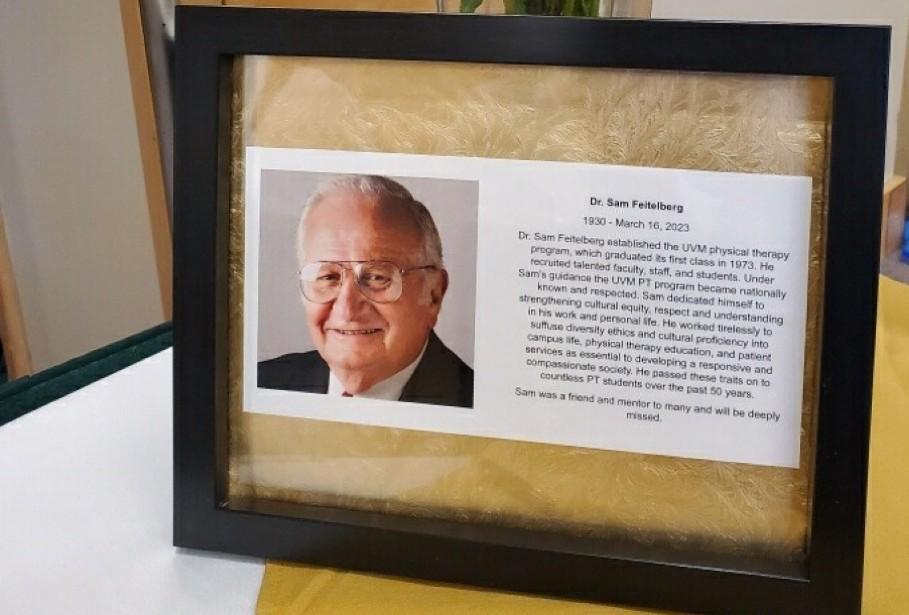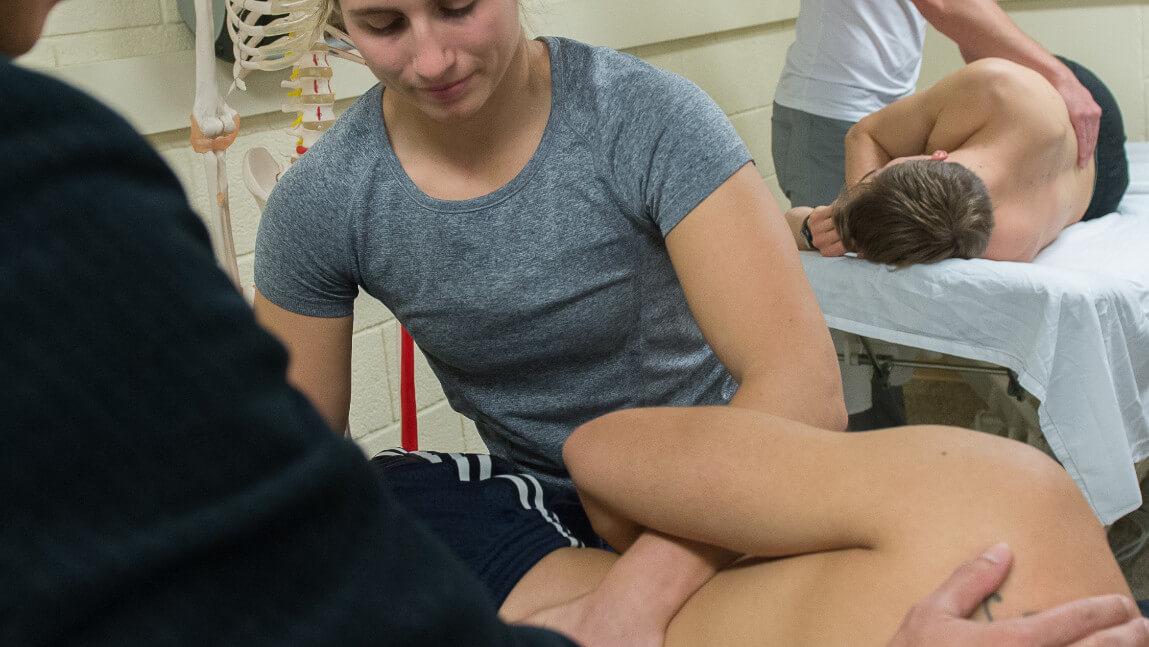Physical therapists help restore function and reduce pain for individuals who have experienced injury or disease, translating evidence into contemporary best practices and collaborating with patients, families, and colleagues to improve health outcomes in a complex healthcare environment. But the impact of their work is about more than mobility.
“Physical therapists get patients back on their feet. They get patients back to work. They get patients back to life,” said Provost Patricia Prelock in her opening remarks at the UVM Physical Therapy program’s anniversary event on March 30 in the Davis Center.
For fifty years, the University of Vermont has educated collaborative leaders in the physical therapy profession through a nationally well-regarded program known for preparing practitioner scholars. The program’s distinctive legacy is born of collaborations that facilitate communication, training innovation, sharing of resources and strategic alliances created through the vision of program founder Samuel Feitelberg, who passed away on March 16.

Feitelberg worked with the UVM Board of Trustees to establish UVM’s physical therapy department in 1973 and was the first department chair. He served on the faculty for 26 years, including as associate dean and director of health sciences in the former UVM School of Allied Health Sciences. He was also instrumental in developing the Journal of Physical Therapy Education (JOPTE), the profession’s primary academic journal.
Initially created as a bachelor’s degree, UVM’s program was among several physical therapy programs supported by the Allied Health Professions Personnel Training Act of 1966, which provided grants to assist in the construction or rehabilitation of health professions training centers. In the early 2000s, the program evolved to a master’s degree. Since 2006 UVM has offered an entry-level doctorate in physical therapy (DPT) to keep pace with the APTA’s vision for all physical therapists to hold DPT degrees by 2020. Today, there are three cohorts of about 40 students taught by nine full-time clinical and research faculty in the 2.5-year program, which covers basic, clinical, and applied sciences; concepts of practice management; health policy and ethics; and quality in health care. The University contracts with more than three hundred clinical sites throughout the U.S. - including the UVM Medical Center and UVM Health Network - to provide supervised firsthand practice opportunities.
The experience, expertise, and collaborative spirit of Feitelberg and founding faculty members Dorothy Page, Judy Anderson, Mary Moffroid, Larry Sampson, and Margaret Corbin helped set UVM’s program apart from the beginning.
“Shared leadership across the medical center, university, college and private clinical practice, as well as partnerships with state agencies and professional organizations, are among the characteristics that contribute to the distinct legacy of the program,” said alum Michael Emery ‘75, who has been involved with UVM throughout his physical therapy career as a student, clinical staff member, faculty member, and consultant.
Clinical Associate Professor Justine Dee began working at the University of Vermont Medical Center while Feitelberg was chair of the physical therapy department there. UVM faculty held joint positions at the hospital, and the arrangement instilled a mutually beneficial collaborative spirit between the organizations.
“The PT department had excellent community clinicians to help teach in the classroom, and the hospital physical therapy clinicians had opportunities for continued professional education and research,” said Dee.
Feitelberg also developed a non-profit outpatient physical therapy practice in collaboration with the UVM PT department and the hospital to further clinical practice and better serve the community. He was a skilled negotiator who saw the importance of building a community among faculty, staff, and students. He was well-known as a storyteller and a great listener who valued equity and inclusivity.
”Sam Feitelberg often said that physical therapy was a profession of the head, the hands, and the heart, which encompasses the need of a PT to utilize the best evidence when making clinical decisions, to perfect the clinical examination and manual skills necessary for effective interventions, all while providing compassion and caring during a patient encounter,” said Dee. “He loved the practice of physical therapy and was the profession's best advocate.
Feitelberg kept remarkable track of his students and faculty and would watch their careers from afar. He spoke of them as if they were his children, said his son Michael Feitelberg, who serves as Chief Executive Officer of The Edge Total Health Network.
“When he would speak about his students or faculty, I was always surprised at the details he would remember, not just about them, but about their families, where they came from and what made them special,” said Feitelberg. In his dad’s home office, Feitelberg found a binder containing pictures of every physical therapy class from his father’s tenure at UVM, with notes and reminders written in the margins.
“UVM PT students leave campus with a strong sense of compassion, not just for their patients but each other, and the understanding that their work is often life-changing for the patients they treat,” said Feitelberg. “They embrace the responsibility that their work goes beyond the treatment room . . . and leave campus as future leaders, problem-solvers, advocates, and entrepreneurs in the profession and beyond. Just as my dad had hoped for them five decades ago.”
College of Nursing and Health Sciences Dean Noma Anderson closed her remarks with Maya Angelou’s poem “When Great Trees Fall” in Feitelberg's honor. She emphasized the impact of his legacy as she thanked current and past faculty and students for their contributions to the program's success.
“As the saying goes, we stand on the shoulders of giants,” said Anderson.
